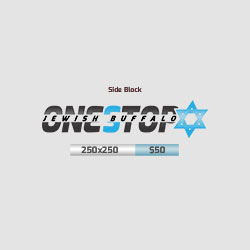Which is the Most Important Holiday?
If we were to be asked which of the Holy Days we observe during the month of Tishrei is the most important one, we would probably be expected to answer: Yom Kippur. Though, if we were to substitute Rosh Hashanah as our answer we would not be incorrect either. Rosh Hashanah and Yom Kippur represent the beginning and the end of a period of judgment, when the fate of the entire universe is at stake. On Rosh Hashanah the world is placed on trial and on Yom Kippur the verdict is rendered.
In truth, we would not be faulted if our answer to the above question – which Holy Day in this season is most significant — had been Sukkos or Simchas Torah, the culmination of the festivals of the month of Tishrei.
“Roshpursukatzetorah”!
However, the best answer to this question is actually “Roshpursukatzetorah!” Yes, “Roshpursukatzetorah!”
And if you might be wondering what in the world is “Roshpursukatzetorah”; is it some new Holiday? The answer is that it is the abbreviated form for Rosh Hashanah, Yom Kippur, Sukkos, Shemini Atzeres and Simchas Torah.
And since we are in the mood for questions, why not address one more question:
Why amalgamate all these Holy Days into a single polysyllabic spiritual package?
Intertwined
A serious attempt at understanding the essential nature of all the Holidays of the month of Tishrei reveals that they are intertwined and interconnected and inherently one multifaceted holiday: “Roshpursukatzetorah.”
On the surface, it would appear that Rosh Hashanah and Yom Kippur are solemn days of soul-searching and introspection, while Sukkos and Simchas Torah are devoted to song, dance and merrymaking. These latter festivals are hardly compatible with the somber nature of the High Holy Days. How then can we regard them as all components of just one great big Holiday?
A deeper analysis of the nature of these special days demonstrates, however, that, in fact, the two sets of Holidays observed in the month of Tishrei (Rosh Hashanah and Yom Kippur on the one hand, and Sukkos and Simchas Torah on the other) are but opposite sides of the same coin.
Rosh Hashanah is not simply an arbitrarily chosen day of judgment in our tradition. It is the anniversary of the creation of the Universe by our Divine Creator! Moreover, the world is put on trial then because, at that same time every year, the world must be created anew; the world must justify its right to exist each and every year on that day.
On every Rosh Hashanah G-d determines, based on our response to Him, how much G-dly energy He will vest in the Universe and to whom He will specifically channel it. On Yom Kippur His determination is sealed. However, everything remains in an amorphous, potential state at that point.
Even after Yom Kippur we are not totally assured of the nature of the forthcoming year. And it is reasonable to ask the question that, if on Yom Kippur the fate of the Universe is sealed for the next year, what more has to happen to complete that process?
The Role of Sukkos
This is where the Festival of Sukkos comes into the picture. This joyous Holiday at the end of Tishrei enables us to reap the benefit of our efforts during the first half of the month. The energies introduced into the world on Rosh Hashanah and Yom Kippur are first made manifest during the Festival of Sukkos.
In other words, Rosh Hashanah represents the creation of potential spiritual energy, whereas it is Sukkos when that potential is actualized. This revealed state of renewed spirituality is represented and achieved by way of the Mitzvah of dwelling in a Sukkah, the primary Mitzvah of the Festival.
The Sukkah, which surrounds us on all sides, represents the way the G-dly forces that we initiated during Rosh Hashanah and Yom Kippur envelop and embrace us.
An embrace is undoubtedly an expression of deep affection and indicates a desire for a meaningful relationship. However, being surrounded and embraced by the Sukkah is not sufficient for us to reap the full benefits from the Divine energies that are present in this season. In human relationships, a heartfelt hug may express profound love, which is crucial in a lasting relationship, but the hug alone doesn’t suffice. The loving aura that surrounds us must be internalized.
It is the Mitzvah of “Lulav and Esrog,” which we are commanded to perform during the seven days of Sukkos, that helps us internalize that external energy.
When we take the Lulav, with its Hadassim and Aravos (palm, myrtle and willow branches), and Esrog (Citron) in hand and bring them up next to our hearts, we can internalize the encompassing forces present in the Sukkah.
The Role of Sukkos, Shemini Atzeres and Simchas Torah
The season of the Holy Days is not over and the process of spiritual growth has not finished until Shemini Atzeres and Simchas Torah (the eighth and ninth days of Sukkos). Even after we succeed – during the Festival of Sukkos – to internalize the inspiration engendered by Rosh Hashanah and Yom Kippur and made manifest by dwelling in the Sukkah, there is still no guarantee that it will endure.
This is where Shemini Atzeres enters the scene. Shemini Atzeres is the point in time when the seeds of Holiness sown throughout Sukkos take root. It is then that our Kabbalists state that “conception” occurs, thereby ensuring growth and vitality in the future months of the year.
The name Shemini Atzeres, when translated in a way that captures its nuances, yields the following: “[It is a day that] the wealth of spirituality is contained so as to guarantee its lasting influence on us.”
Once the process of generating a new Divine lease on life for the Universe during Rosh Hashanah and Yom Kippur is complete, and this energy penetrates into our consciousness, it is time to celebrate. That is what we do on Simchas Torah, arguably the most joyous Holiday of the year, because we have acquired a treasure trove of spiritual and physical blessings for the year.
It is now quite obvious that the five Holy Days within the month of Tishrei are actually one continuum of spiritual opportunities.
During Rosh Hashanah and Yom Kippur, we unleash the renewed Divine energies which remain latent until Sukkos. This accounts for the solemn character of these Holy Days, because the joy over the new “revelation” must remain temporarily suppressed. On Sukkos, when the light generated by us on Rosh Hashanah and Yom Kippur is released and we begin to appreciate its radiance, we cannot help but feel real joy and excitement. Thus, the entire Festival of Sukkos is designated as “the Season of our rejoicing.” That joy and excitement climaxes on Shemini Atzeres and Simchas Torah.
Thus, Sukkos and Simchas Torah are not separate Holidays; they incorporate all the Holidays of this month.
Simchas Torah of History
The Tishrei continuum, where all the Holidays can be seen as one series of events in which the Divine energy enters the world, can also serve as a metaphor for our history as a people, which will provide us with an answer to a commonly asked question about our readiness for and entitlement to the coming of Moshiach.
Many have asked how is it that Moshiach has not already come despite the presence of towering scholars and the greatest souls and greater involvement in Torah observance in the past rather than in the present?
The answer is that our generation, our souls, enjoy the cumulative effect of all of our righteous forebears. We are the Simchas Torah of history, within which all the other Rosh Hashanah and Yom Kippur periods are embodied.


